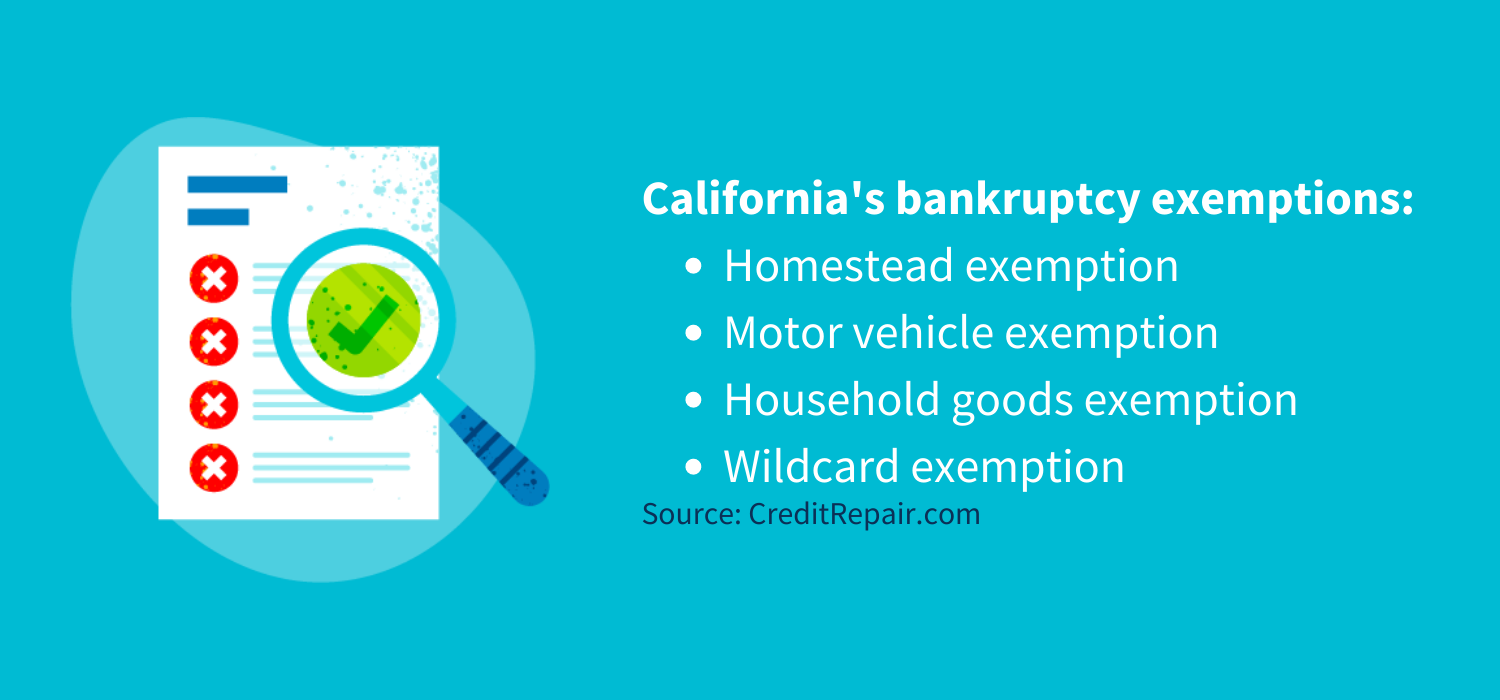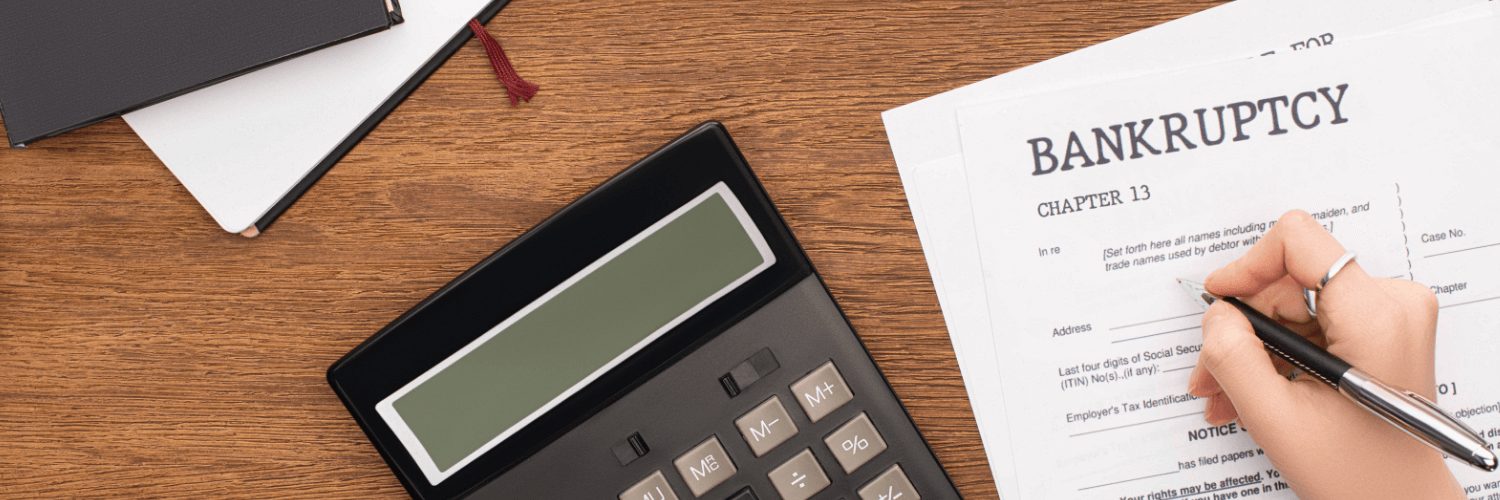Disclosure regarding our editorial content standards.
Filing bankruptcy in California isn’t that different from other states because bankruptcy is regulated under federal law rather than state laws. The primary difference is that California has different laws regarding the types of assets you may retain possession of during a bankruptcy.
If you’re worried about losing your house, car or personal belongings because you’re behind on your bills, filing for bankruptcy in California might be an option to eliminate debt or get better repayment terms. To file for bankruptcy, you need to see if you qualify and then follow the steps outlined in this guide.
What is bankruptcy?
Bankruptcy is a legal action you can take if you’re unable to pay your outstanding debts. Depending on the type of bankruptcy you file, you may either give back the assets that you owe money on in return for forgiveness of your debts or restructure how these debts are paid back. Filing for bankruptcy has an immediate impact on your credit score, which may make borrowing more difficult while the bankruptcy appears on your credit report.
There are two types of bankruptcy individuals may file.
Chapter 7 bankruptcy
A Chapter 7 bankruptcy completely dissolves your debt so you don’t owe money on that debt. Before you can have your debts discharged, however, you must liquidate your assets to pay as much of your debt as possible. The court decides which of your creditors are entitled to the proceeds from the sale of your assets.
This is an option if you have protected assets due to exemptions or if most of your debts are unsecured. It’s also the quickest way to file for bankruptcy and can be completed in four to six months.
Chapter 13 bankruptcy
If you have secured debts, such as a mortgage or a car payment, and wish to keep your assets, a Chapter 13 bankruptcy may be the better option. This type of bankruptcy allows you to restructure your debt and make payments to your lenders through a court-appointed trustee. In many cases, you’re able to save money on the interest you owe on your outstanding debts.
Chapter 13 bankruptcies can take three to five years to discharge because you’re required to make payments in installments over this time. However, it’s an option if you’re looking to prevent foreclosure on your home or car repossession.
How to file for bankruptcy in California
Filing bankruptcy in California isn’t that different from other states because bankruptcy is regulated under federal law rather than state laws. The primary difference is that California has different laws regarding the types of assets you may retain possession of during a bankruptcy.
For example, federal bankruptcy laws allow you to keep only $25,150 in equity in real property, while California bankruptcy laws allow either $29,275 or $75,000 depending on how you file. Married couples with a joint bankruptcy petition may be eligible to keep real property up to $150,000.
If you’re considering filing for bankruptcy, here’s the process you’ll need to follow:
- Do your due diligence and research bankruptcy to determine if it’s right for you. The most important questions you need to answer are if you qualify for bankruptcy and if there are alternatives that might be better.
- While it’s possible to file for bankruptcy without an attorney, most people would benefit from a lawyer’s expertise and experience. You should look for an attorney who specializes in bankruptcy law.
- There are a lot of financial documents you need to gather before you can file for bankruptcy, such as pay stubs and income statements, bills, bank statements, tax returns and other financial paperwork. If you retain a bankruptcy attorney, they can help you gather this information.
- Stop making payments on the types of debt that qualify for bankruptcy. Please note that some debts can’t be discharged through bankruptcy, including student loans, domestic support agreements such as child support or alimony and most tax debts. After you file a motion for bankruptcy, the court will notify your creditors, and they’ll stop demanding payment on your debts.
- To qualify for bankruptcy, you need to sign up for a credit counseling class. This is meant to teach you skills that may help you budget more effectively in the future so you don’t fall behind on your bills.
- After you file for bankruptcy, a trustee or representative of the U.S. Trustee program will conduct a 341 meeting that you are required to attend. During this meeting, your creditors can ask questions about your assets and debts.
- If you’re filing Chapter 13, there will also be a confirmation hearing. In this meeting, a bankruptcy judge will evaluate whether you qualify for bankruptcy and approve a payment plan so you can repay your debts. A judge may approve or reject a repayment plan or send you back to revise it.
- After completing your credit counseling class, you’ll need to provide the court with your course certificate before your debt can be discharged.
What are California’s bankruptcy exemptions?
Exempt property includes assets you own that can’t be liquidated to repay your lenders. Exemptions might include the following:

California homestead exemption
The California homestead exemption allows you to protect the equity in your home. If you own more than one property, you can only use this exemption for the property you reside in, and your additional properties aren’t protected. There are two systems you can choose when declaring exemptions, and the one you select affects how much equity you may declare exempt. There are also requirements about how long you’ve owned your home.
It also doesn’t mean you’ll automatically get to keep your home. In some situations, trustees may opt to sell your property, pay you back any exempted amount of equity from the proceeds of the sale and use the remainder to pay creditors.
California motor vehicle exemption
If you own a vehicle that’s essential to your ability to get to and from work and to perform daily activities, you can use this exemption to protect some of the equity in your vehicle. If you owe more on your vehicle than the exemption allows, you’ll need to repay the rest in a Chapter 13 bankruptcy or give up the vehicle if you’re filing Chapter 7.
California household goods exemption
This exemption allows you to declare any item in your home that’s worth less than $800. The items you declare must be considered necessary, so be careful when choosing what you declare as exempt.
California wildcard exemption
If you qualify for this exemption, you can use any part of the homestead equity you didn’t use plus an additional $1,700 to declare any property you choose as exempt.
These are only some of the exemptions that are available under California law. To learn what else might be exempt, you should speak with an attorney so you can decide the best course of action.
Will filing for bankruptcy in California erase your debt?
Filing bankruptcy in California can erase many types of debt. However, there are some types of debt you may still be responsible for, even if you choose to file Chapter 7 bankruptcy. In a Chapter 13 bankruptcy, some of your debt might be discharged immediately due to exemptions, but you’ll need to pay the rest in installments.
The types of debt you might not be able to discharge include tax debts and student loans. While discharging student debt is difficult, it’s not impossible, so discuss with your attorney whether it’s worth it to try. Tax debts can’t be erased, but you may be able to repay them over time as part of a Chapter 13 bankruptcy.
What property will you get to keep after filing?
If you’ve filed a Chapter 7 bankruptcy, you’ll lose any property that’s not exempt that you owe money on. In a Chapter 13 bankruptcy, you’re often allowed to keep your car, house and other property while you repay the debt. If you default on your bankruptcy payments, the court-appointed trustee may file a motion to have your case dismissed, which would allow your lenders to foreclose on your home or repossess your vehicle.
Is bankruptcy the right choice for you?
If you owe medical debt, are behind on your house or car payments or have a lot of credit card debt, it’s easy to feel despair over your financial situation. While bankruptcy is an option, it’s only right in certain situations.
The credit advisors at CreditRepair.com can help you review all your options before you take this step. We’re also able to help you dispute inaccuracies on your credit report
Note: The information provided on CreditRepair.com does not, and is not intended to, act as legal, financial or credit advice; instead, it is for general informational purposes only.
The post How do you file for bankruptcy in California? appeared first on CreditRepair.com.




No comment